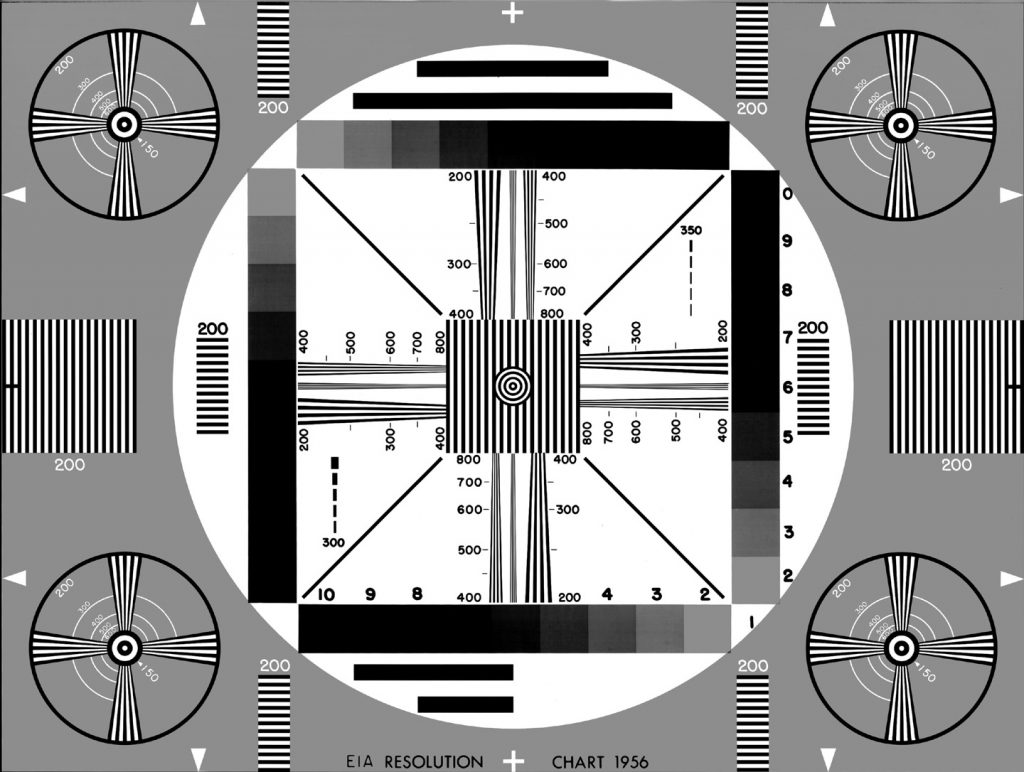
We are often asked, what is the best IP camera for my security or surveillance system? Over the last year, we tested a number of different IP cameras. We compared their published specifications and more importantly how they actually performed in our tests. We found that sometimes the less expensive camera can be a much better value.
In the following head to head test, we compared the Sony SNC-VM601 to the Axis P3384V. Both of these dome IP cameras have similar specifications and provide the latest wide dynamic range (WDR) capability. The test determined which camera provided the best value and performance.
We compared camera resolution, low light sensitivity, wide dynamic range, and actual usage in a specific application. Of course, these are not the only characteristics to consider, but we have found these to be the most important in many applications. Here are the results:
Resolution test
There are many cameras that claim high-resolution capability, but what is their actual performance? Resolution is more than just the number of pixels in the sensor. It is also determined by the lens and amplifier circuits in the camera. For more details about camera resolution take a look at our article Understanding IP Resolution Specifications. Our testing compared the resolution of the two 1 megapixel cameras.

To test the resolution we used a TV camera resolution chart that has been around for many years. The chart has converging lines with resolution numbers at the side of the lines. To determine the best resolution, one observes where the converging lines blend together. The point where you can see just the black and white lines clearly is the point of the best resolution. The number on the side of the lines is the resolution measured in “TV lines of resolution”. This is an old test chart but we found it was the best way to actually make the comparison.
The results indicated that the Sony SNC-VM601 provided the best resolution when compared to the Axis P3384 camera.
Wide Dynamic Range Test
Wide dynamic range (WDR) can be very important when you are viewing a very bright scene where there are dark shadow areas, or when you are viewing people against a large window with bright sunlight. Many IP cameras have WDR of about 50 dB, but the latest cameras have more than doubled the performance.
We compared the WDR capability of the Axis P3384V to the Sony VM601 IP dome camera. Both cameras specify a wide dynamic range of around 120 dB. We found that there was very little difference between these two cameras, except that the Sony camera provided more flexibility in a variety of lighting situations.
As a review, WDR can be provided in two ways. You can use non-linear amplification or you can take multiple frames at different amplification levels and average them together. When you use frame averaging the shutter speed is reduced and thus reduces the low light sensitivity performance.
Here’s why the Sony camera was more flexible. When WDR is used, the low light sensitivity (lightfinder in the Axis) is automatically turned off. You can’t have them both on. Both cameras include the frame averaging technique, but the Sony camera also includes the non-linear method they call “visibility enhancer”. This function accomplishes almost the same thing as the frame averaging WDR but doesn’t affect the shutter speed. The nice thing about this capability is that you can turn on both the higher performance low light function (“View-DR”) as well as the WDR (“visibility enhancer”). The combination of very low light sensitivity and WDR works very well to improve visibility when there is a situation where you have low light levels at night and WDR requirements during the day.
Low Light Sensitivity
We tested the low light sensitivity of the Sony IP camera against the Axis camera. We slowly reduced the light level in the room and observed the visibility and noise levels of the scene. The Axis camera stayed in color longer than the Sony camera, but surprisingly at the lowest light levels, where both cameras switched to BW mode, the Sony camera outperformed the Axis camera.
Real-World Test
We focused both cameras on a parking lot which is a typical application for IP cameras. These are not outdoor cameras so we positioned them at the window and reduced the glare using light shields. For reference, both of these cameras are also available in outdoor versions. This test demonstrated the need for an adjustable lens that allows you to focus on the specific area of the parking lot you want to see. When looking at a large parking lot, you have to be careful to adjust the lens so that you see the detail you would like. For example, if you want to be able to identify license plate numbers the view can’t be too wide, but if you just need an overview the lens angle can be much wider. Both cameras include remote zoom and focus which makes it very easy to adjust the viewing area from your computer. The viewing angle of the Sony camera can be adjusted to be slightly wider (93 degrees) than the Axis P3384V camera (84 degrees). They both could be adjusted to provide about the same magnification (30 degrees vs. 31 degrees for the Sony camera).
We observed that both the Sony and Axis cameras provided relatively the same performance in this test.
Comparison Chart of Axis vs. Sony IP Cameras
The following chart summaries the specifications and tested the performance of the Axis and Sony cameras.
| Model | Axis P3384V | Sony VM601 |
|---|---|---|
| Resolution | ||
|
Specification |
1 megapixel (1280 x 960) |
1.3 megapixel (1280 x 1024) |
|
Test Performance |
3 |
5 |
| Low Light Sensitivity | ||
|
Specification |
0.15 lx in color, 0.03 lx with lightfinder on, WDR off |
0.03 lx in color, 0.02 lx BW with video enhancer on, WDR off |
|
Test Performance |
4 |
5 |
| Wide Dynamic Range | ||
|
Specification |
120 dB |
130 dB |
|
Test Performance |
5 |
5 |
| Price | ||
|
Street Price |
$850 |
$760 |
Summary
Based on our testing, both the Axis P3384V and Sony SNC-VM601 are very good cameras, but when you consider the price you have to pay for the Axis camera, the Sony is a much better value. The Sony IP camera tested better than the Axis camera and is our top choice. Remember that the camera is only one part of the IP camera security system. You should also consider the software, enclosures, ease of installation, and other factors that are important in your specific application.
If you need help selecting the right IP camera, please contact us at 914-944-3425 or 1-800-431-1658 (in the USA) or just use our contact form.